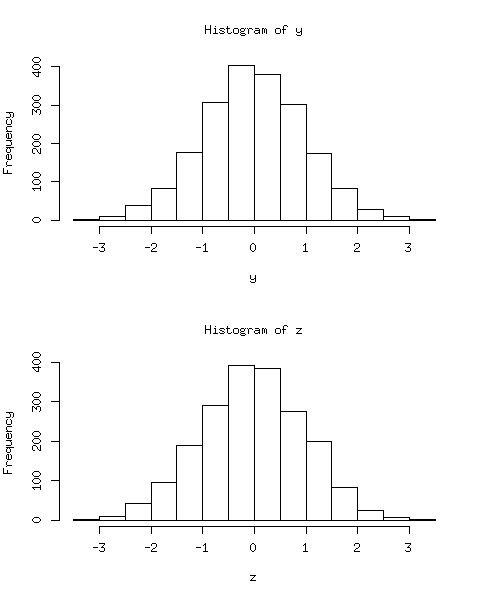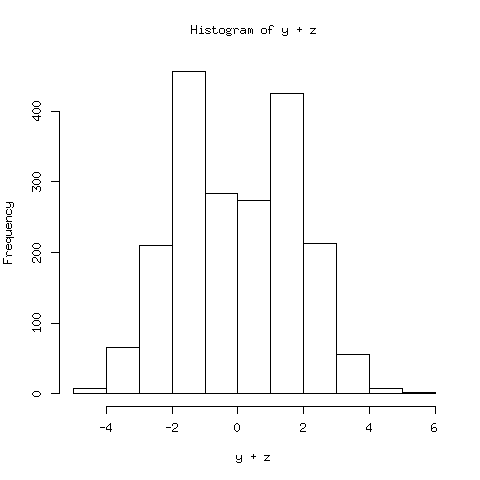Is Normal normal?
The rumor says that Normal distribution is everything.
It will take a long long time to talk about the Normal distribution thoroughly. However, today I will focus on a (seemingly) simple question, as is stated below:
If and are univariate Normal random variables, will also be Normal?
What’s your reaction towards this question? Well, at least for me, when I saw it I said “Oh, it’s stupid. Absolutely it is Normal. And what’s more, any linear combination of Normal random variables should be Normal.”
Then I’m wrong, and that’s why I want to write this blog.
A counter-example is given by the book Statistical Inference (George Casella and Roger L. Berger, 2nd Edition), in Excercise 4.47:
Let and be independent random variables, and define a new random variable by
Then it can be shown that has a normal distribution, while is not.
Here I will not put any analytical proof, but use some descriptive graphs to show this. Below is the R code to do the simulation.
set.seed(123);
x = rnorm(2000);
y = rnorm(2000);
z = ifelse(x * y > 0, x, -x);
par(mfrow = c(2, 1));
hist(y);
hist(z);
x11();
hist(y + z);
We obtain the random numbers of and , and then use histograms to show their distributions.


The result is clear: Both and should be Normal, but has a two-mode distribution, which is obviously non-Normal.
So what’s wrong? It is not uncommon that we hear from somewhere, that linear combinations of Normal r.v.’s are also Normal, but we often omit an important condition: their joint distribution must be multivariate Normal. The formal proposition is stated below:
If follows a multivariate Normal distribution, then any linear combination of the elements of also follows a Normal distribution.
In our example, we can prove that the joint distribution of is not bivariate Normal, although the marginal distributions are Normal indeed.
Then you may wonder how to construct more examples like this, that is, are both random variabels, but is not a bivariate Normal. This is an interesting question, and in fact, it’s much related to the Copula model. Here I only give some specific examples, while the details about Copula model may be provided in future posts.
Consider functions
and use to denote the c.d.f. of distribution, then , and are all joint distribution functions that satisfy 1) not bivariate Normal and 2) marginal distributions are .
Seems good, right?
